Ozone is a very effective disinfectant and is effective against all viruses and bacteria. Ozone operates according the principle of oxidation. Ozone (O3) is instable and will revert to oxygen (O2) on it’s own, or when it contacts something it can oxidize. Living cells found in bacteria and viruses are very susceptible to oxidation. As ozone enters cells, it oxidizes (destroys) their components including the cell wall. Once ozone has entered, the process destroys all essential components (enzymes, proteins, DNA, RNA). When the cellular membrane is damaged during this process, the cell will fall apart. This is called lysis — the disintegration of a cell by rupture of the cell wall or membrane. From this point there is no recovery and the pathogen is inactivated. Due to the direct oxidation ozone causes (loosing the oxygen atom) there is greater energy to ozone oxidation vs other comparable chemicals.
Most
commonly ozone is used dissolved into water. When dissolved in water
ozone increases the ORP (oxidation reduction potential) of the water,
all of the water is now a sanitizer with electrical potential for
pathogen inactivation through lysis. When the water (with sufficient
ozone levels) contacts a pathogen it will react with that pathogen
inactivity it. This is extremely efficient and effective.
Ozone
can also be used in the ambient air in the gaseous form for
antimicrobial applications. Ozone in air is a spacial
consideration. The air is not charged as water is when ozone is
dissolved in water. Air simply has ozone in within it.
An example. 0.1 ppm ozone is the safe limit for humans in air for an 8 hour period of time. 20.0 ppm is a relatively high level used in rooms at times for disinfection. This means 20 parts of every 1 million parts of the air are ozone. This ozone molecule needs to react with a pathogen cell to inactivate it. The likely-hood of this in a short period of time is low.
As ozone reverts back to oxygen quickly and frequently, longer the exposure times increase the odds of ozone reacting with the pathogen. Ozone reverts back to oxygen faster (shorter half-life) as temperatures and humidity increase. Therefore, higher ozone levels, higher temperatures, and higher humidity will increase the opportunity for ozone to react with pathogens on surfaces.
Ozone levels used for sanitation should be chosen based upon the goals and requirements for this space, and the ambient conditions present. Reasonable levels of 5-10 ppm are commonly used. Higher levels are also possible. Keep in mind any natural rubber materials will be damaged by ozone use at high levels over long periods of time. Therefore, keep ozone levels and frequency of use reasonable.
Attached are documents on the use of ozone in air for antimicrobial uses. These are great resources to use to ensure ozone is the right solution for your application. Should you need more specific information let us know, we will provide what we have.
A few options we have for ozone sanitation in rooms are listed below. These systems can also all be used in an HVAC system to maintain low levels of ozone in a building for room air disinfection.
HTU-500
0.5 g/hr ozone production
https://www.oxidationtech.com/products/ozone-generators/o3/htu500.html
The HTU-500 with an internal air pump will produce 0.5 g/hr ozone from 3 LPM air.
Adequate in a 5 m3 space for short-term sanitation applications.
Adequate in a 100 m3 space for low occupied spaces for air disinfection
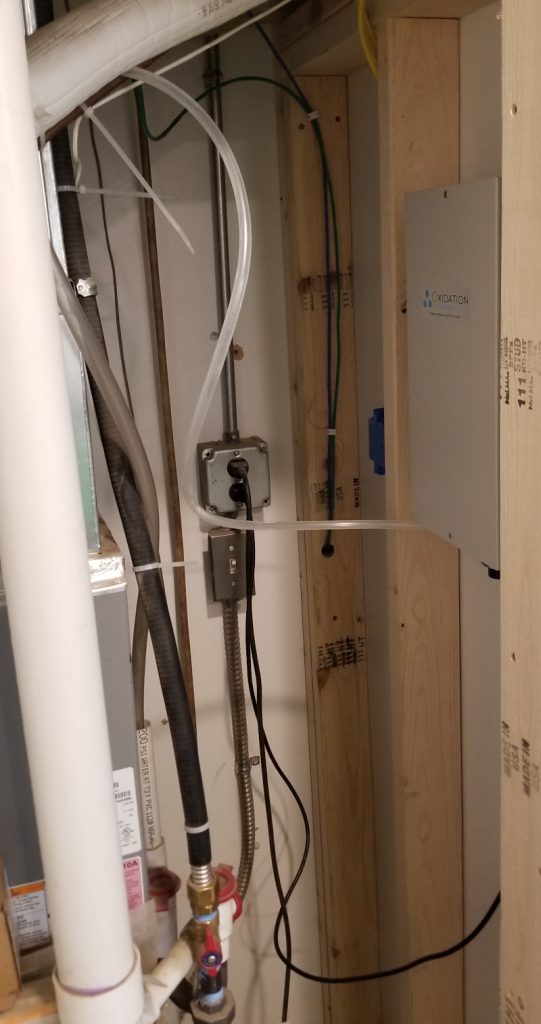
VMUS-4 = $1,335
2 g/hr ozone production
https://www.oxidationtech.com/products/ozone-generators/o3/vmus4.html
The VMUS-4 with internal air pump will produce 2 g/hr ozone from 3 LPM air.
Adequate in a 22 m3 space for short-term sanitation applications.
Adequate in a 450 m3 space for low occupied spaces for air disinfection

VMUS-4 + pump + Air drer = $2,455
4 g/hr ozone production
https://www.oxidationtech.com/products/ozone-generators/o3/vmus4.html
https://www.oxidationtech.com/vmd-8.html
The VMUS-4 with external air pump will produce 4 g/hr ozone from 8 LPM air flow
Adequate in a 45 m3 space for short-term sanitation applications.
Adequate in a 900 m3 space for low occupied spaces for air disinfection
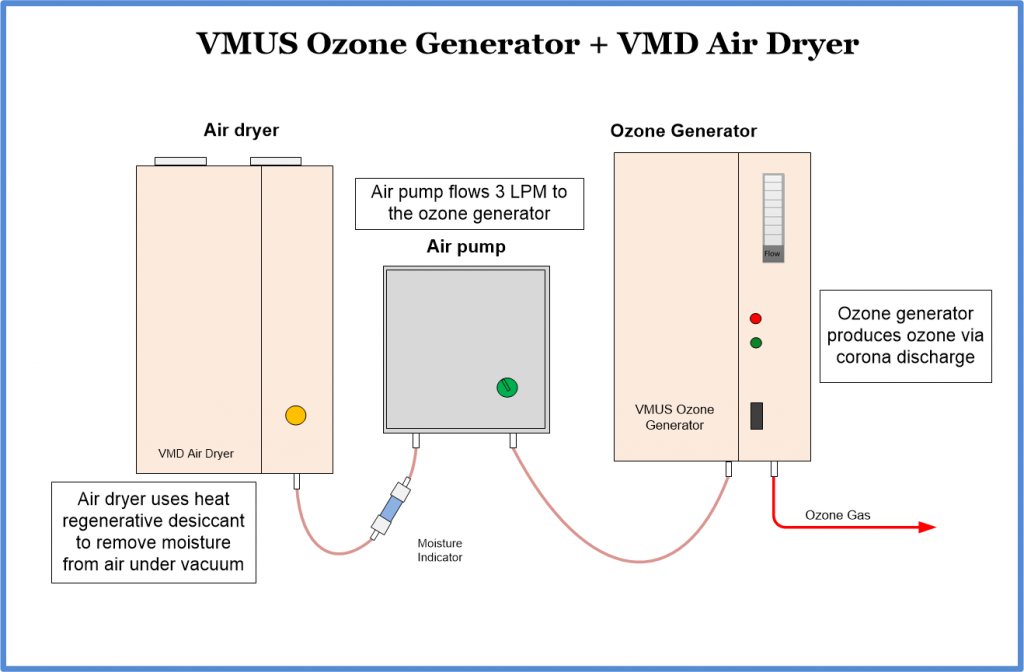
VMUS-4 + Oxygen = $2,682
10 g/hr ozone production
https://www.oxidationtech.com/products/ozone-generators/o3/vmus4.html
https://www.oxidationtech.com/max-series.html
The VMUS-4 with oxygen concentrator will produce 10 g/hr ozone from 6 LPM oxygen
Adequate in a 100 m3 space for short-term sanitation applications.
Adequate in a 2,000 m3 space for low occupied spaces for air disinfection
Oxygen can also be provided from external source, or from a portable oxygen bottle.
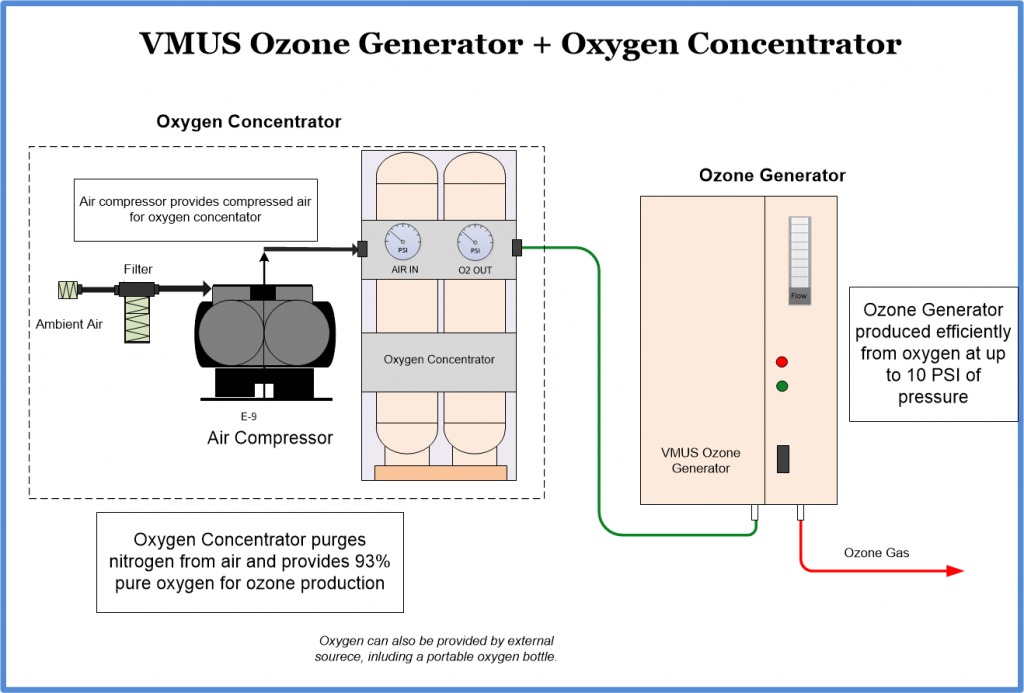
Ozone monitoring and control
For control purposes, an ozone monitor can be used. This can turn the ozone generator ON/OFF based on safe levels of ozone, or verify that ozone levels achieved the desired level for disinfection.
OS-6 remote ozone monitor
- 0-20 or 0-50 ppm range
- 0.01 ppm resolution
- 10% accuracy
- 0.1 ppm relay, and 1 user-settable relay
The OS-6 ozone monitor is the perfect device for ozone level controls. This unit has 2 separate relays, one set to 0.1 ppm for human safety, while the other can be set for any set-point desired.

https://www.oxidationtech.com/products/ozone-monitors/fixed-ozone-monitor/os6-ozone-monitor.html
S-200 handheld or remote ozone monitor
- 0-0.5, and 0-10 ppm ranges
- 0.001 ppm resolution
- 10% accuracy
- Min/Max/Average on the screen
- Optional on-board data logging with the S-500
The S-200 ozone monitor will measure ozone as a handheld or with an optional remote sensor. Min/Max/Average ozone levels displayed on the screen along with current ozone levels.
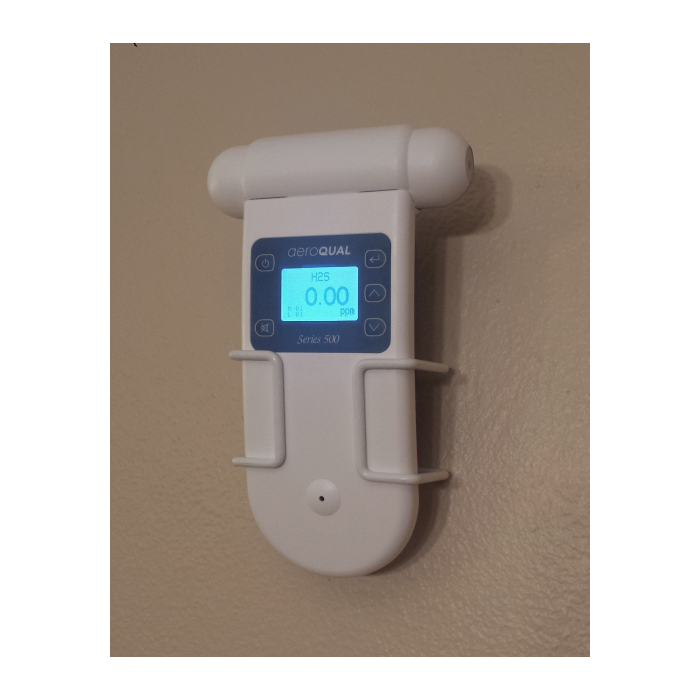
UV-106L
- 0-100 ppm range (optional 0-1,000 or 0-10,000 ppm ranges)
- 0.0001 ppm resolution
- 2% accuracy
For higher ozone levels with greater accuracy the UV-106L ozone analyzer can be used to measure and control ozone levels. The UV-106L includes built-in data-logging and accuracy to within 2% of reading. With a faster warm-up period, and greater accuracy the UV-106L is a great option for portable systems or systems that require greater accuracy.
https://www.oxidationtech.com/uv106l-ozone-analyzer.html

Ambient ozone destruct
Ozone levels in the room can be quickly converted safely back to oxygen via an ambient ozone destruct unit. The CDA-250 is a great device for this purpose. It flows 250 CFM air through the unit and destroys at least 90% of the ozone via a catalytic material in each pass. Using this device will lower ozone levels to a safe level quickly for faster turn-around time for your ozone disinfection room or chamber.
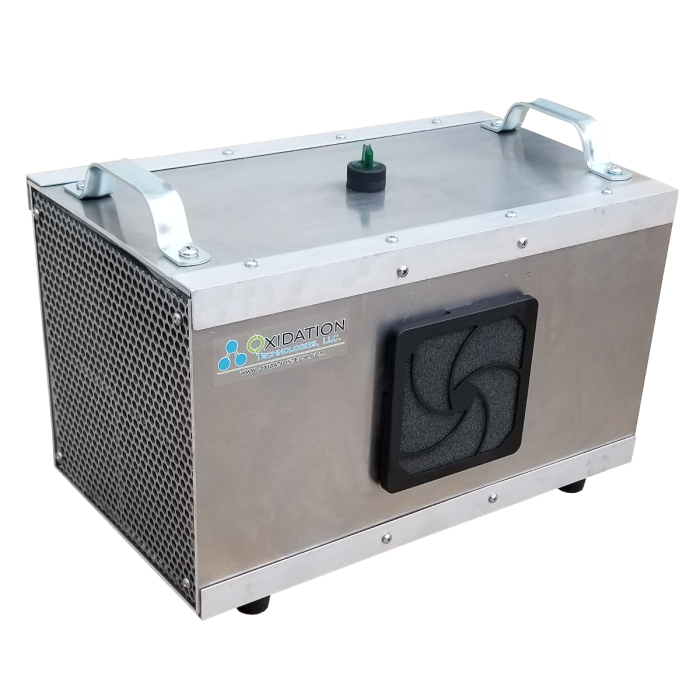
Gas gas can be an effective disinfectant in the gaseous form, but must be used safely and with proper caution. Should you have questions on this application, or any details, please contact our office.
For additional information see papers at link below on this ozone application.
